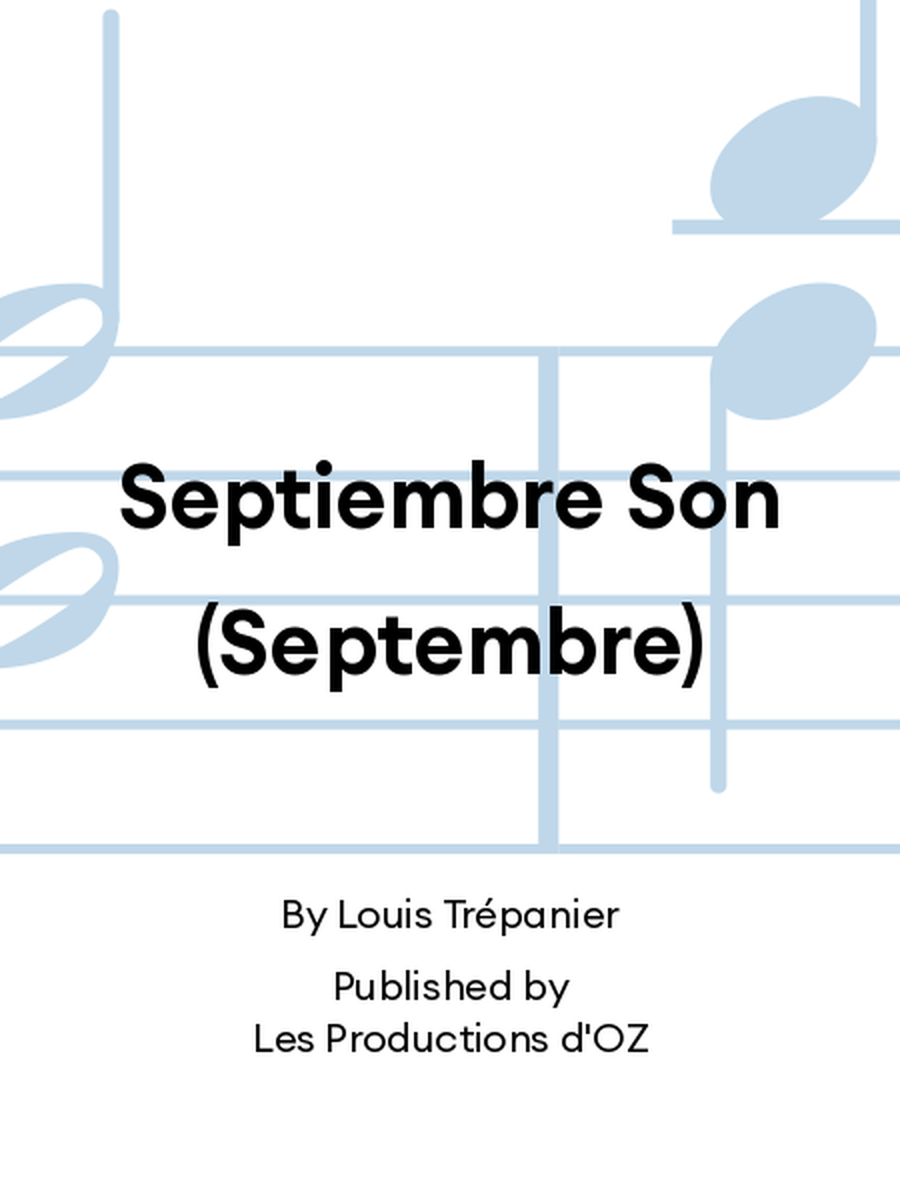Guitar solo - Advanced
SKU: DZ.DZ-4089
Composed by Louis Trépanier. Score. Les Productions d'OZ #DZ 4089. Published by Les Productions d'OZ (DZ.DZ-4089).
ISBN 9782898520068.
September probably has the best weather of all the months; my good friend Isaac Noël, one of this piece’s two dedicatees, was born in this ideal time. As to the other dedicatee, René Izquierdo, it was while listening to him in concert that it occurred to me to dress this étude in a Cuban flavour. From these two elements we get the title, Septiembre Son.
This is an étude of articulation in many forms: legato and staccato, accents (those that are written out, as well as those subtleties of attack that are implicit in this style of music), a wide range of dynamics, from ppp to fff, and, finally, slurs (simple slurs, simultaneous slurs in the same direction, simultaneous slurs in the opposite direction, as well as slurs executed at the same moment that the right hand plucks a note).
The player will hopefully note that many passages would be much more difficult to play if not for the staccatos in that passage, as the shortened note length allows left hand fingers to lift early and be ready for the next notes. Fingering is minimal, each player will need to sort out their own fingerings, fingerings that work well for the player, yet allow the notes to be held for their full length. Where there are no staccato indications, please play as legato as possible. The guitarists will also need to decide which staccatos are achieved by use of the right hand, and which are simply a matter of lifting a left-hand finger. When two simultaneous notes of the same length are each marked with a staccato, it is best to block all strings, to avoid any remaining sympathetic resonances, thereby creating a total, albeit short silence.
In the last bars, diminuendo alla Dyens is indicated with the repeat symbols. This is in memory of Roland Dyens, and the effect is to repeat the bars many times over, always getting softer and softer, and to keep the fingers moving for a bit after you’ve stopped making any sound.
Septembre contient probablement les températures les plus agréables de tous les mois; c’est dans ce moment idéal de l’année qu’est né mon ami Isaac Noël, l’un des dédicataires de cette étude. Quant à l’autre dédicataire, René Izquierdo, c’est à un de ses concerts que j’ai eu l’idée d’habiller cette pièce avec une saveur cubaine… Le mélange de ces deux éléments nous produit alors le titre, Septiembre son.
Cette étude traite principalement du domaine de l’articulation sous plusieurs formes : le legato en opposition au staccato, les accents (celles qui sont indiqués, mais aussi toute subtilité d’attaque qui soit implicite à ce style de musique), un large éventail dynamique allant du ppp au fff, et finalement les liaisons (liaison simple, deux liaisons simultanées dans la même direction, ou en directions opposées, et une liaison qui doit être exécutée en même temps qu’une note attaquée à la main droite).
Plusieurs passages auraient été beaucoup plus difficile à bien exécuter s’il n’était pas des staccatos qui s’y trouvent, les notes raccourcis permettent aux doigts de la main gauche d’être libérés plus tôt pour aller vers les prochaines notes. La partition contient très peu d’indications de doigté, laissant aux guitaristes la tâche de concevoir des options qui fonctionnent bien pour eux et qui respectent la durée des notes. Là où il n’y pas de staccato, bien vouloir jouer le plus legato possible. Les guitaristes devront également décider quels staccatos seront accomplis par la main droite, et quels seront le résultat du doigt de main gauche qui se soulève. Aux moments où deux notes du même rythme ont chacune un staccato, il faudrait bloquer toutes les cordes afin d’éviter la résonnance d’harmoniques sympathiques et créant ainsi un très bref silence total.
Aux dernières mesures, celles qui sont répétées, j’ai indiqué diminuendo alla Dyens en mémoire de Roland Dyens: répétez ce passage plusieurs fois, toujours en diminuant de volume, et pour l’effet complet, bougez vos doigts encore un peu quand vous ne produirez plus de son.



